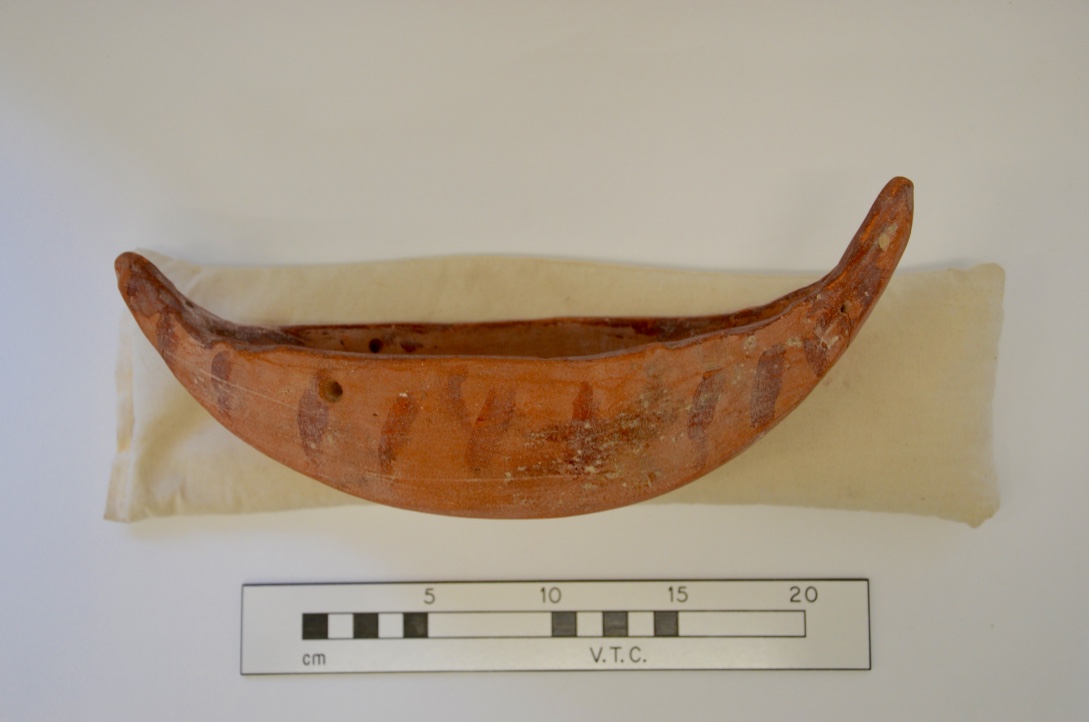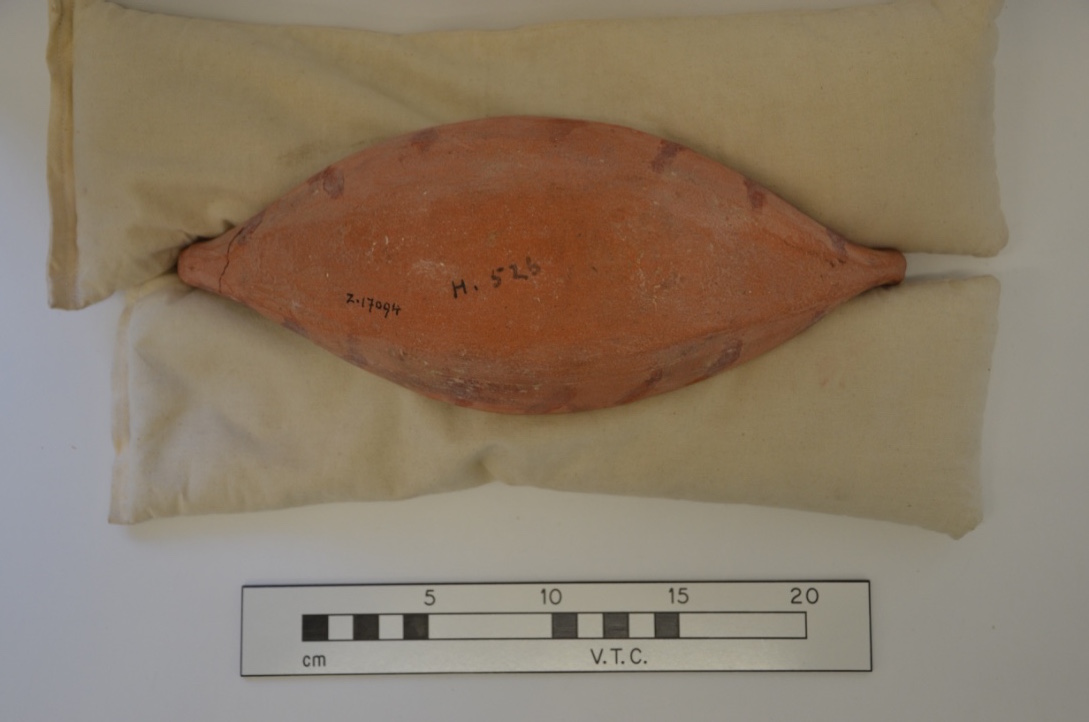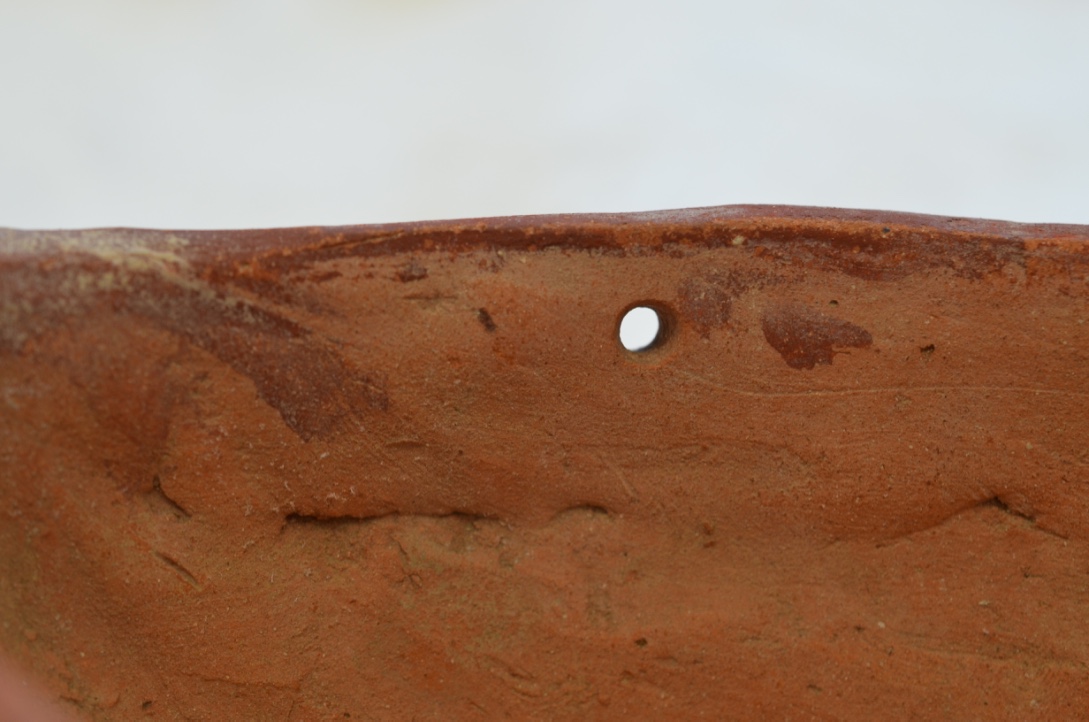Model – boat MOD-0044
By Vanhulle, Dorian
, Archaeological context unknown. 1899–1901 : Discovered at Kom el-Ahmar (?).Cambridge, Museum of Archaeology and Anthropology, Z 17094 (A326; H.52b).
Date : Naqada II (C-D)
This model belong to the same category of production as the D-Ware ceramics, which are dated to the Naqada II period (especially Naqada C–D in regards to vases bearing depictions of boats).
Material : Marl clay
Preservation : Complete
Description
Boat model in marl clay reproducing a sickle-shaped boat. The interior is completely hollowed out. The starboard and the port side are converging towards the extremity until they merge into pointed finals; one is higher than the other. The base of the object is flat while the walls of the hull are rounded.
Decoration
Perforations has been drilled in aft gunwales, one in each side. Both are facing each other. The diameter of the perforation is about 0.4 cm. Two smaller perforations (about 1 cm) have been drilled at the basis of the higher extremity. Another small hole is located in one of the extremity. It does not go through the whole object.
The gunwale is painted in ochre and vertical stripes are painted in the same colour along the hull. These lines appear to have been trace with a finger. Such use of red paint on a light-coloured ceramic is reminiscent of D-Ware productions.
Dimensions (cm)
6.6
11.2
28.5
Additional information
Comments
Marked in red paint on side of vessel: 'A326'. Marked in black on base of vessel: 'H.52B'. This vessel is listed under A326 in Doc.46, what appears to be a catalogue of Egyptian predynastic ceramics in the museum's collection assigning numbers from A300-A326. This numbering system has been marked in red paint on some, but not all (as in Z 16749), of the objects themselves, using the form 'A/01 309' or 'A324'. The vessels listed in the catalogue come from excavations or donations dating to 1899, 1900 and 1901 but often whilst the donor or excavator is known, the actual sites are not known or at least not listed. Who compiled the catalogue and for what purpose is not currently known, although previous suggestions have been that it was Frederick.W. Green's attempt at an abortive numbering scheme. The entry for A326 gives the site as Kom el Ahmar, the donor as the Egyptian Research Account, and the date of excavation or donation as 1899. None of this information was previously recorded in either the catalogue card or catalogue record. The record has therefore been updated accordingly, but does not, however, mention that the boat is marked 'H.52b' [or H.526], in contrast to most other catalogue entries where the marks are recorded. This may simply have been an oversight on the part of the cataloguer (possibly F.W. Green) or it may be that the object was marked afterwards. Similar models exist and come from the Naqada region. It is possible that the 'H' of 'H.52b' refers to the cemetery of Hu. This cemetery was excavated along with Diospolis Parva and Abadiyeh, not far from Naqada. Moreover, the Petrie Museum has a model very similar that comes from Hu (UC 10805 ; Petrie, 1933, Egyptian Shipping, in: Ancient Egypt, p. 5, fig. 9). Also similar is an exemple in the Ashmolean Museum (AN 1895.622) from Ballas. There was also a cemetery "H" at Diospolis Parva, dated from the Early Dynastic Period by A. Mace and W.M. Flinders Petrie, but this provenance is less likley. At the moment, the question of where this object was found remains unresolved..
Acknowledgements
We thank I. Gunn (Museum of Archaeology and Anthropology, Cambridge) for facilitating the study of this artefact.





















